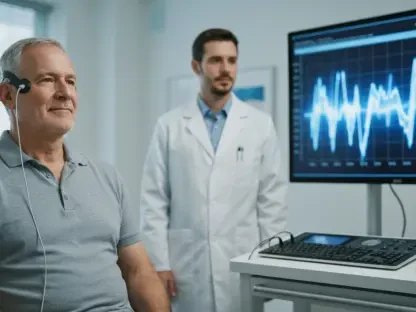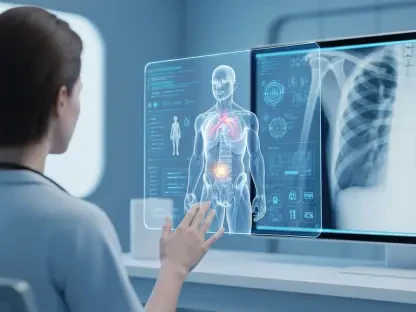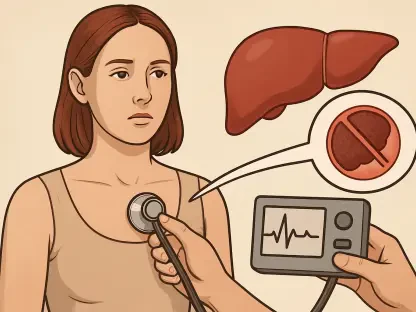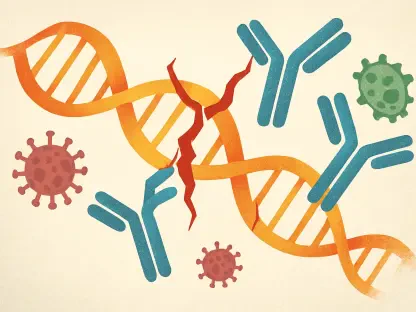The field of drug discovery has long been hindered by the slow and laborious process of synthesizing and screening small molecules, putting a strain on scientific research advancements. Traditional methods are often time-consuming and require a high degree of specificity, making it difficult to keep up with the rapid pace of innovation in the pharmaceutical industry. Consequently, researchers have been searching for more efficient solutions to this problem. However, a groundbreaking innovation by scientists at St. Jude Children’s Research Hospital, led by Daniel Blair, PhD, promises to revolutionize this process. By leveraging the predictable fragmentation patterns of chemical building blocks, the researchers have developed a novel method that could significantly accelerate drug discovery and change the paradigm for the synthesis and analysis of new molecules.
The Need for Speed and Efficiency in Drug Discovery
In the realm of drug discovery, speed and efficiency are paramount, with the demand for rapid, high-throughput analysis being a constant challenge for researchers. Traditional analytical methods, although precise, are not sufficiently scalable to meet these demands. Researchers find themselves bogged down by the time-consuming nature of synthesizing and screening vast collections of new molecules, creating a bottleneck that hampers the development of new therapies and slows the progress of scientific research. The inability to quickly sustain high-throughput analysis not only delays potential treatments but also increases costs, ultimately impacting patient health outcomes. Speedier and more efficient methods are urgently needed to transform the field and keep up with the rapid pace of discovery demanded by modern science.
The visionary work led by Dr. Daniel Blair and his team at St. Jude Children’s Research Hospital aims to address this critical issue head-on. By identifying general features that can uniformly encode the analysis of small molecules, they have developed a method that significantly expedites the process and broadens the scope of applications. The researchers discovered that the building blocks used to create small molecules exhibit specific, predictable fragmentation patterns. These patterns can be used as universal barcodes, revolutionizing the way chemical reactions are analyzed. This transformation has the potential to dramatically accelerate the development of new therapies, making the process more efficient and accessible. Ultimately, the work conducted by Blair and his team underscores the importance of innovation in overcoming the obstacles faced in drug discovery and providing quicker solutions to pressing medical needs.
Fragmentation Patterns as Universal Barcodes
One of the most groundbreaking innovations introduced by the St. Jude team is the use of fragmentation patterns as universal barcodes, which promises to vastly improve the efficiency of drug discovery. This approach leverages the fundamental property of chemical matter, fragmentation, in a novel way that applies to chemical synthesis and analysis. By focusing on these predictable patterns, the researchers have created a method that shifts chemical reaction analysis from a slow, highly specialized process to a streamlined, efficient approach. The key innovation lies in the ability to use these fragmentation barcodes universally, across different types of molecules and reactions, to quickly and accurately determine the outcomes of chemical synthesis.
The fragmentation-first approach means that the analysis of chemical reactions can be performed in milliseconds rather than minutes, which radically transforms the efficiency of the process. This rapid analysis capability is a game-changer for the field of drug discovery, allowing researchers to quickly identify the functions of newly synthesized molecules without the prolonged delays of traditional methods. The ability to perform real-time analysis of chemical reactions represents a significant milestone in the mission to develop effective therapies swiftly and efficiently. This faster analysis pace removes one of the key bottlenecks in drug discovery, enabling scientists to iterate more quickly and potentially discover new treatments faster than ever before.
Broad Applicability Across Various Domains
The revolutionary method developed by Daniel Blair and his team is not limited to a specific disease or discipline, showcasing its broad applicability across various domains within biomedical research. Because the fundamental property of fragmentation is universal, this approach can be applied across a wide range of chemical reactions and molecular types. Future applications could include the development of antibiotics, antifungals, cancer therapeutics, molecular glues, and many other types of molecules, broadening the scope and impact of this innovation. This universality demonstrates the versatility and far-reaching potential of the fragmentation-first approach, making it a useful tool for researchers in diverse areas of study.
This broad applicability underscores the potential of the fragmentation-first method to truly transform the field of drug discovery, enabling researchers to combat a wide range of diseases more effectively. By providing a generalized and streamlined method for chemical reaction analysis, the researchers have paved the way for the rapid development of new therapies in various medical fields. The ability to quickly analyze and identify the functions of chemical products means that researchers can more effectively and rapidly develop novel treatments for numerous diseases. This advancement not only accelerates drug discovery but also enhances the precision and efficacy of new therapeutics, significantly impacting patient care and outcomes.
Transforming Chemical Reaction Analysis
The novelty and significance of the approach presented by the St. Jude researchers lie in its ability to drastically reduce the time required for chemical reaction analysis. Traditional methods often involve slow, highly specialized processes that are neither scalable nor suitable for high-throughput analysis. The fragmentation-first methodology, on the other hand, offers a streamlined, efficient approach driven by easily identifiable fragmentation barcodes, transforming how chemical synthesis is analyzed and characterized. This transformation from time-consuming to rapid analysis represents a significant advancement in the field, allowing researchers to perform chemical reaction analysis in a fraction of the time previously required.
By leveraging the predictable fragmentation patterns of chemical building blocks, the researchers have created a method that facilitates real-time analysis. This capability is crucial for the rapid development of new therapies, as it allows scientists to quickly move from synthesis to function identification without the delays characteristic of traditional methods. The ability to perform rapid chemical reaction analysis not only accelerates the discovery process but also enhances the accuracy and reliability of identifying the functional aspects of new compounds. This advancement marks a major milestone in the quest for more effective and timely therapeutic development, providing a powerful tool for researchers.
Implications for Future Research and Development
The implications for future research and development are vast, as the fragmentation-first method established by the St. Jude team offers numerous benefits in efficiency and speed. Leveraging fragmentation patterns as universal barcodes significantly boosts the efficiency of drug discovery. This method exploits the intrinsic property of chemical matter, fragmentation, in a unique way that benefits chemical synthesis and analysis. By focusing on these predictable patterns, researchers have developed a technique that transforms chemical reaction analysis from a slow, specialized procedure into a more streamlined and efficient process. The core breakthrough lies in the universal application of these fragmentation barcodes across various molecules and reactions, enabling quick and precise determination of chemical synthesis outcomes.
This fragmentation-first approach allows chemical reaction analysis to be performed in milliseconds instead of minutes, dramatically enhancing efficiency. This swift analysis is a game-changer for drug discovery, enabling researchers to rapidly identify the functions of newly synthesized molecules without the delays typical of traditional methods. Real-time analysis of chemical reactions marks a significant advancement in developing effective therapies swiftly. This increased analysis speed removes a critical bottleneck in drug discovery, allowing scientists to iterate and potentially discover new treatments faster.









